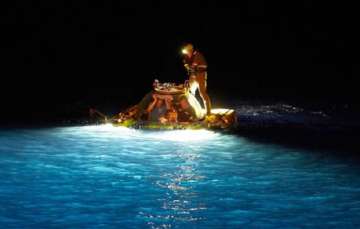A giant tectonic plate under the Indian Ocean is breaking into two pieces, a new study has found. In a report published by the Live Science, it was said that the plate, known as the India-Australia-Capricorn tectonic plate, is splitting at a snail's pace. To give an idea about the speed of the rocky breakup, the report perceived it to be about 0.06 inches (1.7 millimeters) a year. Simplifying further, it said that in 1 million years, the plate's two pieces will be about 1 mile (1.7 kilometers) farther apart than they are now. For humans this breakup would take an eternity, the report mentioned.
"It's not a structure that is moving fast, but it's still significant compared to other planet boundaries," study co-researcher Aurélie Coudurier-Curveur, a senior research fellow of marine geosciences at the Institute of Earth Physics of Paris, was quoted as saying by the Live Science.
Giving an example, the report mentioned the Dead Sea Fault in the Middle East and said that it is moving at about double the rate, or 0.2 inches (0.4 centimeters) a year, while the San Andreas Fault in California is moving about 10 times faster, at about 0.7 inches (1.8 cm) a year. It said that the plate is breaking slowly and has been underwater so far.
Spelling out clues for the Indian Ocean, the report said two strong earthquakes originating in a strange spot in the ocean suggested that earth-changing forces were afoot. It was on April 11 in the year 2012 when a magnitude 8.6 and magnitude 8.2 earthquake hit beneath the Indian Ocean, near Indonesia. Pointing to something unusual, it said that the quakes didn't happen along a subduction zone where one tectonic plate slides under another. Instead, the earthquakes originated in a "weird" place -- in the middle of the plate.
Citing geological clues, the report said the earthquakes indicated that some kind of deformation was taking place far underground in an area known as the Wharton Basin. "It is like a puzzle," Coudurier-Curveur told the Live Science. "It's not one uniform plate. There are three plates that are, more or less, tied together and are moving in the same direction together," she further said.
Different parts of the India-Australia-Capricorn are moving at different speeds, the report said, adding that the fracture zone, which was once just a passive crack, is turning into a new boundary for the plate's split. The researchers, however, said that because the breakup is happening slowly, another earthquake along this particular fault likely won't occur for another 20,000 years. It will take tens of millions of years before the split is complete, Coudurier-Curveur said.
